The Pros and Cons of Kanban, Scrum, and Agile: How to Choose the Right Methodology for Your Team
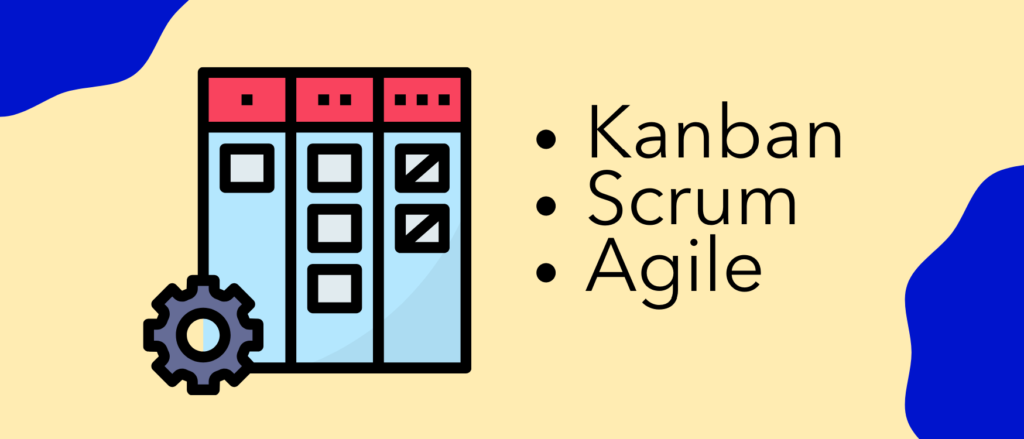
Project management has evolved significantly in recent years. No longer are traditional waterfall methods sufficient for managing today’s complex projects. Instead, agile project management methodology has become the norm. There are three main agile frameworks: Scrum, Kanban, and Agile.
Each of these methodologies has its own unique set of benefits and drawbacks. In this blog post, we’ll weigh the pros and cons of each methodology and help you decide which is best for your team!
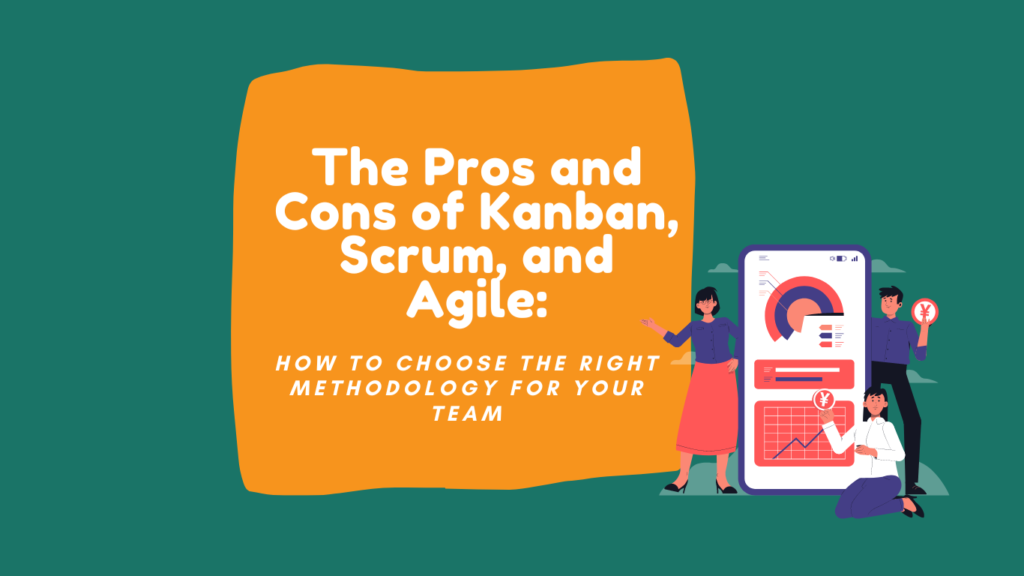
The Evolution of Project Management Tools: Scrum, Kanban, and Agile
Project management has come a long way since the early days of waterfall methodology. Waterfall, as the name implies, is a linear approach to project management in which task completion consists of one after the other in a strict, predefined order. This means that tasks at the beginning of the project will start only when all previous tasks are completed.
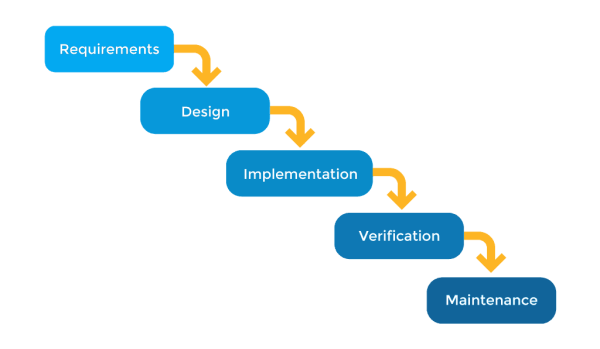
While waterfall methods can be effective for simple projects, they quickly become cumbersome and inefficient as projects become more complex. Therefore, the agile project management methodology is the response to the shortcomings of the waterfall design.
Agile is an umbrella term used to describe a project management methodology in which tasks are completed in small, incremental cycles called sprints. The key principle of agile is that requirements and solutions evolve through collaboration between self-organizing, cross-functional teams.
There are three main frameworks within agile project management: Scrum, Kanban, and Agile. In the following sections, we’ll take a closer look at each of these frameworks and compare their pros and cons.
Keep reading to know more about Scrum, Kanban, and Agile!
Scrum Methodology
The word “Scrum” comes from rugby and it refers to how team members work together to complete a task!
Therefore, it’s no wonder Scrum is one of the most popular agile frameworks! This method has the characteristic of being short, iterative sprints (usually two weeks) in which specific tasks are completed and then reviewed by the team. The Scrum framework is designed to help teams move quickly and adapt to changing requirements.
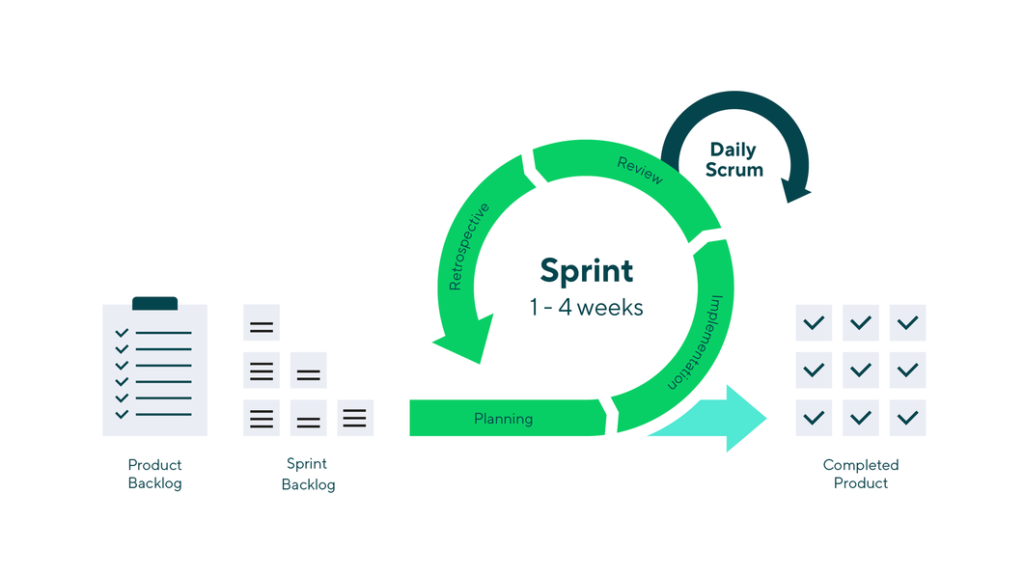
Scrum teams typically consist of three roles: the product owner, scrum master, and development team
- The product owner is responsible for managing the product backlog, which is a prioritized list of all tasks that need to be completed.
- The scrum master acts as a facilitator and coach for the team, helping them to stay organized and on track.
- Lastly, the development team is in charge of building the actual product increment and meeting the sprint goal.
Advantages of Scrum
Thoroughly tested AND battle-tested, scrum is one of the most popular agile frameworks for a reason. Scrum’s iterative sprints help to ensure that projects stay on track and that you are meeting your goals.
The close collaboration between the product owner, scrum master, and development team also helps to ensure that everyone is always on the same page.
Scrum offers:
- Effective use of time and money: Well-planned and well-executed sprints minimize the risk of scope creep and ensure that only the most important tasks are completed.
- Faster task completion: The iterative nature of scrum means that tasks can be completed more quickly than in a waterfall methodology.
- Flexibility: Addition, elimination, or rearrangement of tasks is easier, especially when thinking about needs or priorities.
Disadvantages of Scrum
One of the biggest drawbacks of Scrum is that it can be very rigid and inflexible. Once a sprint has begun, it can be difficult to make changes or adapt to new information. This can lead to frustration among team members as they can feel stagnation while developing the process.
- Requires extensive training: When using the Scrum framework and know their role to make it work. This can be a challenge, especially for larger teams.
- Use of small teams: In order to be effective, Scrum teams need to be small and agile. This can be difficult for large organizations with hundreds of employees.
- Scope creep: When the objectives of a project begin to change or expand after the project has already begun. This can happen for a variety of reasons, such as new information being discovered or unexpected problems arising.
In summary:
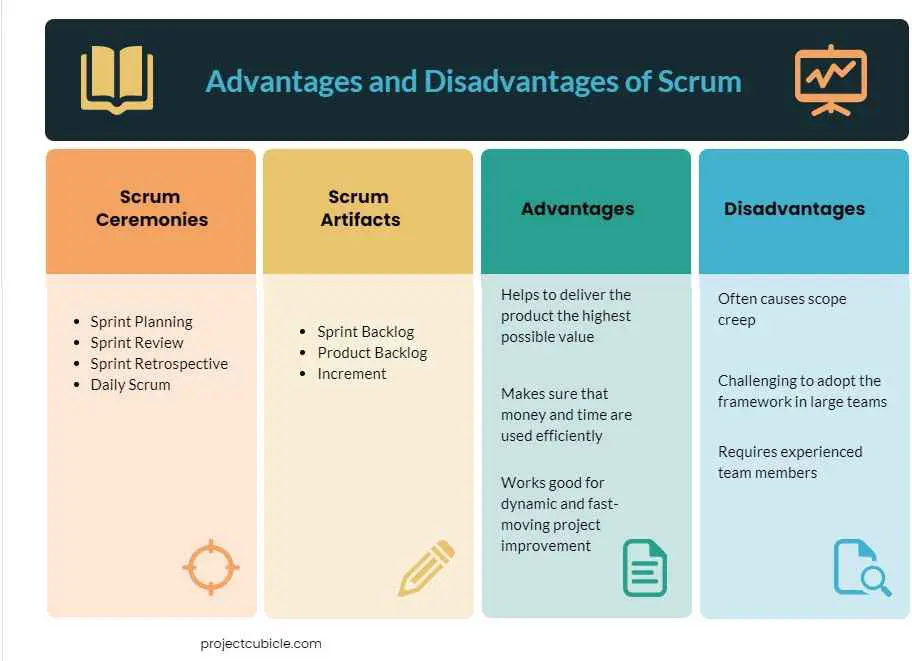
When To Use Scrum Methodology?
Scrum is a good choice for projects that are time-sensitive or need to be completed quickly. The short sprints help to ensure that the project stays on track and keeps moving forward.
Scrum is also a good choice for teams who are comfortable working in close collaboration with each other. Lastly, Scrum is the best fit if the project allows creativity and innovation.
REMEMBER: Take into account the rigidity of each framework of Scrum, Kanban, and Agile and the need for extensive training before choosing to use any of these methodologies.
The Agile Methodology
The agile methodology is a set of values and principles that guide the development of software. The agile approach emphasizes iterative development, team collaboration, and customer feedback.
Advantages of Agile
The agile approach to software development has many advantages. Perhaps the most significant advantage is that it helps to avoid the “dreaded waterfall effect,” in which a project becomes bogged down and delayed due to all the necessary changes in time.
- Customer satisfaction: In agile projects, customer feedback is gathered at regular intervals. This helps to ensure that the final product meets the needs and expectations of the customer.
- Improved quality: The agile approach emphasizes continuous testing and improvement throughout the software development process. This helps to identify and fix errors early on before they become more expensive and time-consuming to fix.
- Improved team morale: an agile approach to software development is designed to be more collaborative and team-oriented. This can help to improve team morale and prevent burnout.
Disadvantages of Agile
The agile approach also has some disadvantages to consider before adopting this methodology.
- Agile can be chaotic: Because agile relies on customer feedback and constant changes, it can sometimes feel like the project is never really “done.” This can be frustrating for team members who prefer a workflow with more structure and predictability.
- It can be difficult to estimate time and costs: with agile projects, it can be difficult to estimate how long the project will take and how much it will cost. This is because agile relies on constant changes and customer feedback, which can make it difficult to predict the future course of the project.
- Limited documentation: In agile projects, there is often limited documentation. This can be a problem if the project needs to be handed off to another team or if the project is complex and requires extensive documentation.
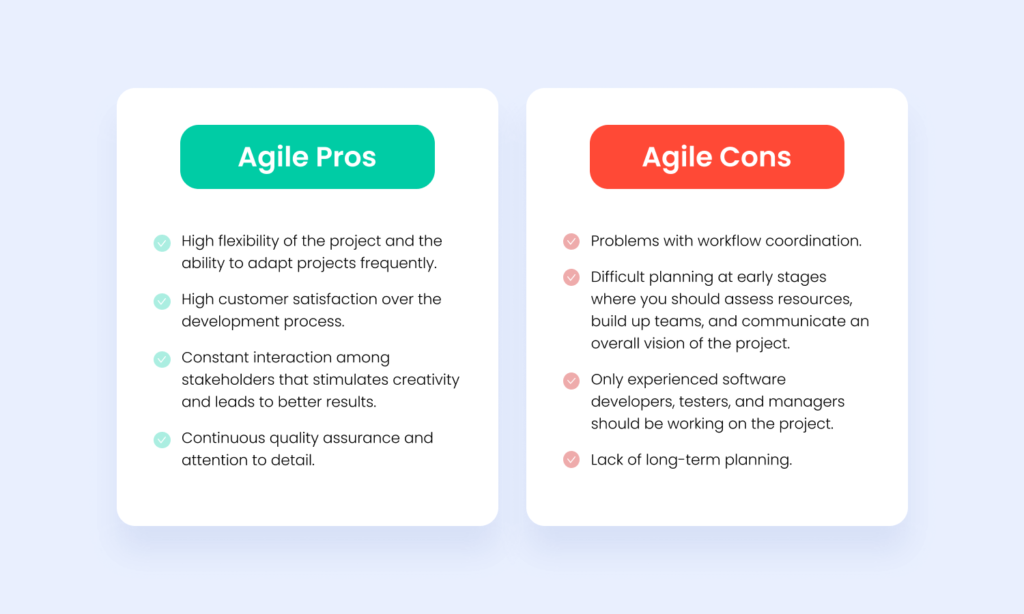
When To Use Agile Methodology?
Agile is a good choice for projects that are complex or may need to be adapted as new information is discovered. The agile approach also works well for teams who are comfortable working in a less structured environment.
Agile is very flexible and can be customized to fit the needs of any team
Agile is a broad term that can encompass many different frameworks and methodologies. This methodology is typically used for software development projects, but it can be adapted to other types of projects as well. However, agile can be challenging to implement if you are not familiar with it.
Agile Vs. Scrum Methodology
Agile and scrum are both agile frameworks, yet there are some key differences between the two.
Scrum is a framework that prescribes specific roles, responsibilities, and processes. Agile, on the other hand, is more of a mindset or philosophy.
Any organization or team size can adopt the agile approach whereas Scrum works exclusively for specific teams. On the other hand, agile offers more flexibility, while scrum provides more structure and guidance.
We offer a summary down below:
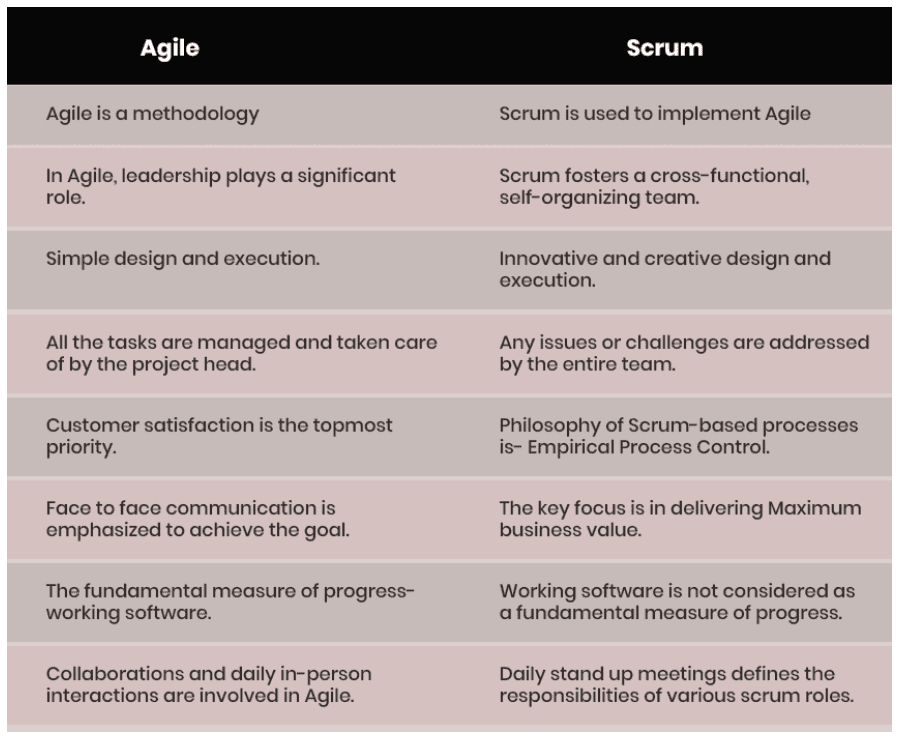
The Kanban Methodology
The Kanban agile framework was originally developed by Toyota in the 1940s as a way to improve manufacturing efficiency. The word “kanban” means “signboard” in Japanese, and this term is used to describe the visual workflow management system that is central to this methodology.
The creation of this framework is a lean-agile methodology is a response to the shortcomings of Scrum. While with Scrum teams move quickly, it can often lead to team members feeling overwhelmed by the pressure to complete tasks in short sprints.
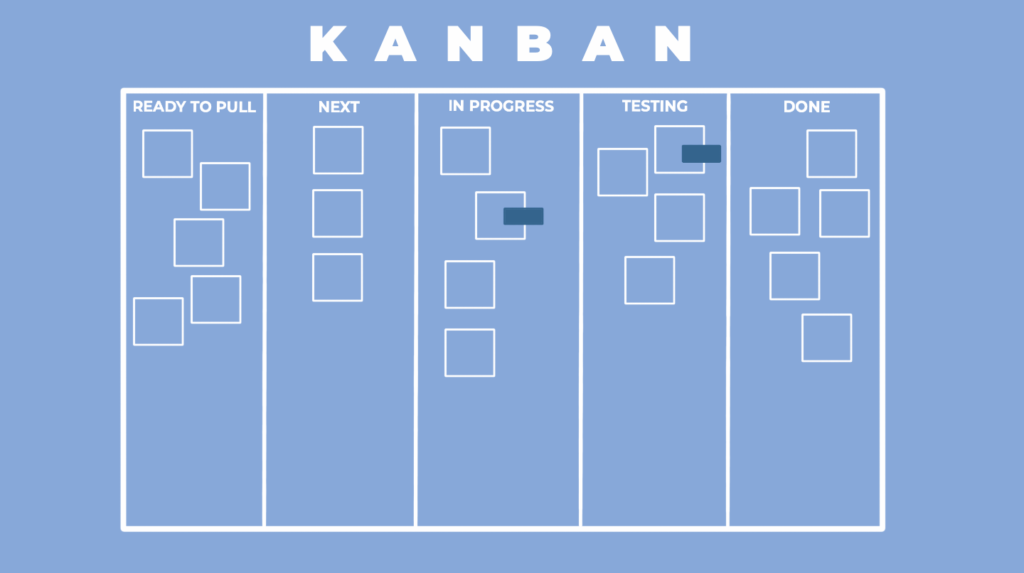
Advantages of Kanban
Kanban has several advantages that make it appealing to agile teams. One of the biggest advantages is that it helps to avoid agile burnout by focusing on the work done, rather than completing tasks in a set amount of time.
- Reduction of wasted work / wasted time: it also helps to reduce wasted work and wasted time by identifying bottlenecks in the workflow and eliminating them.
- Improved communication: Kanban also improves communication among team members by providing a clear visual representation of the workflow. This can help to prevent misunderstandings and miscommunication.
- Better collaboration: The improved communication that Kanban provides is a good choice for agile teams that are looking for a leaner, more efficient way to manage their workflow. It is also a good choice for teams that want to avoid the usual agile burnout.
Disadvantages of Kanban
There are some disadvantages of Kanban as well!
- Not appropriate for all projects: While Kanban adaptation works for most agile teams, this agile framework is also not appropriate for complex projects that require a lot of planning and coordination.
- Flexibility: Because Kanban is so flexible, (maybe too flexible), it can be difficult to know how to get started. This is especially true if you are new to agile or do not have experience with other agile frameworks.
- Lack of documentation: Like agile, there is not a lot of documentation with Kanban out there. This can be a problem if the project needs to be handed off to another team or if the project is complex and requires extensive documentation.
When To Use Kanban Methodology?
This methodology is a good choice for agile teams that want to improve their communication and collaboration. It is also a good choice for teams that are looking for a more flexible agile framework.
However, Kanban is not appropriate for all projects and initiation can be hard with if you are new to agile.
Kanban vs. Scrum Methodology
While they share some similarities, there are also some key differences between the two.
One of the biggest differences between Kanban and Scrum is the way you perform work prioritization. In Kanban, business value leads to work prioritization. The goal is to always be working on the most important tasks first to maximize efficiency.
In Scrum, on the other hand, work prioritization is based on urgency. This means that tasks assignment is based on sprints and all of them need to be completed within that sprint timeframe.
Another key difference is in the way you track work progress. In Kanban, you use a Kanban board to track progress, offering a visualization of the work that needs to be done and the work that has been completed.
We offer a summary down below:
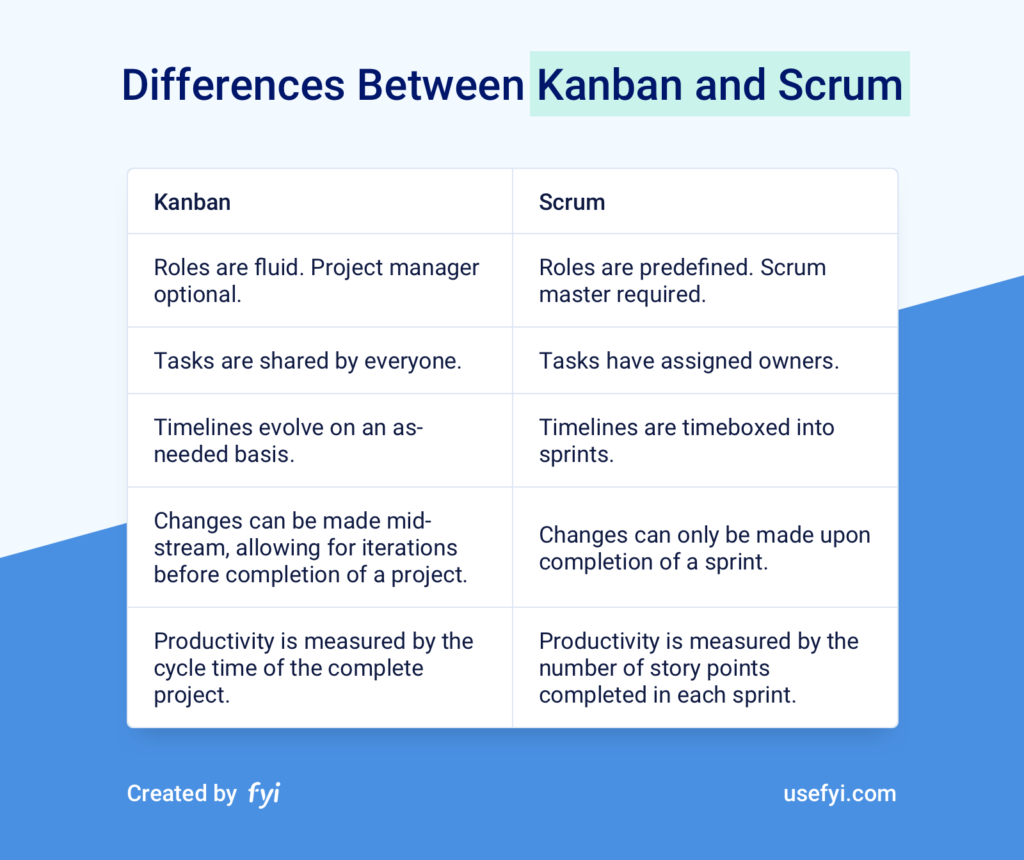
How to Choose the Right Methodology for Your Team: Scrum, Kanban, and Agile?
There is no one size fits all answer when it comes to agile methodology, meaning Scrum Kanban and Agile. The best way to choose the right agile framework for your team is to assess your team’s needs and objectives. Once you’ve done that, you can decide whether Scrum Kanban and Agile is the best choice for your team.
- Kanban is a great choice for teams that want to improve their efficiency and optimize their workflow. However, it can be difficult to implement Kanban if your team has no experience working in an agile environment.
- Scrum is more popular than Kanban, but it can be harder to learn and use effectively. However, Scrum has a lot of benefits, including the ability to help teams move faster and adapt to changes more easily.
- Agile is a good choice for teams that want to be able to move quickly and adapt to changes easily.
Final Thoughts on Scrum, Kanban, and Agile
The right agile methodology for your team depends on a number of factors, including the type of project you’re working on, the size and experience of your team, and your company’s culture.
If you’re not sure which agile framework to choose, we recommend starting with Scrum, which is the most popular agile framework, so it’s a good place to start.
However, if you want to improve your team’s efficiency, Kanban might be a good choice. Ultimately, the best approach is the one that works best for your team. Experiment with different approaches Scrum Kanban and Agile offer and see what works best for your team!


